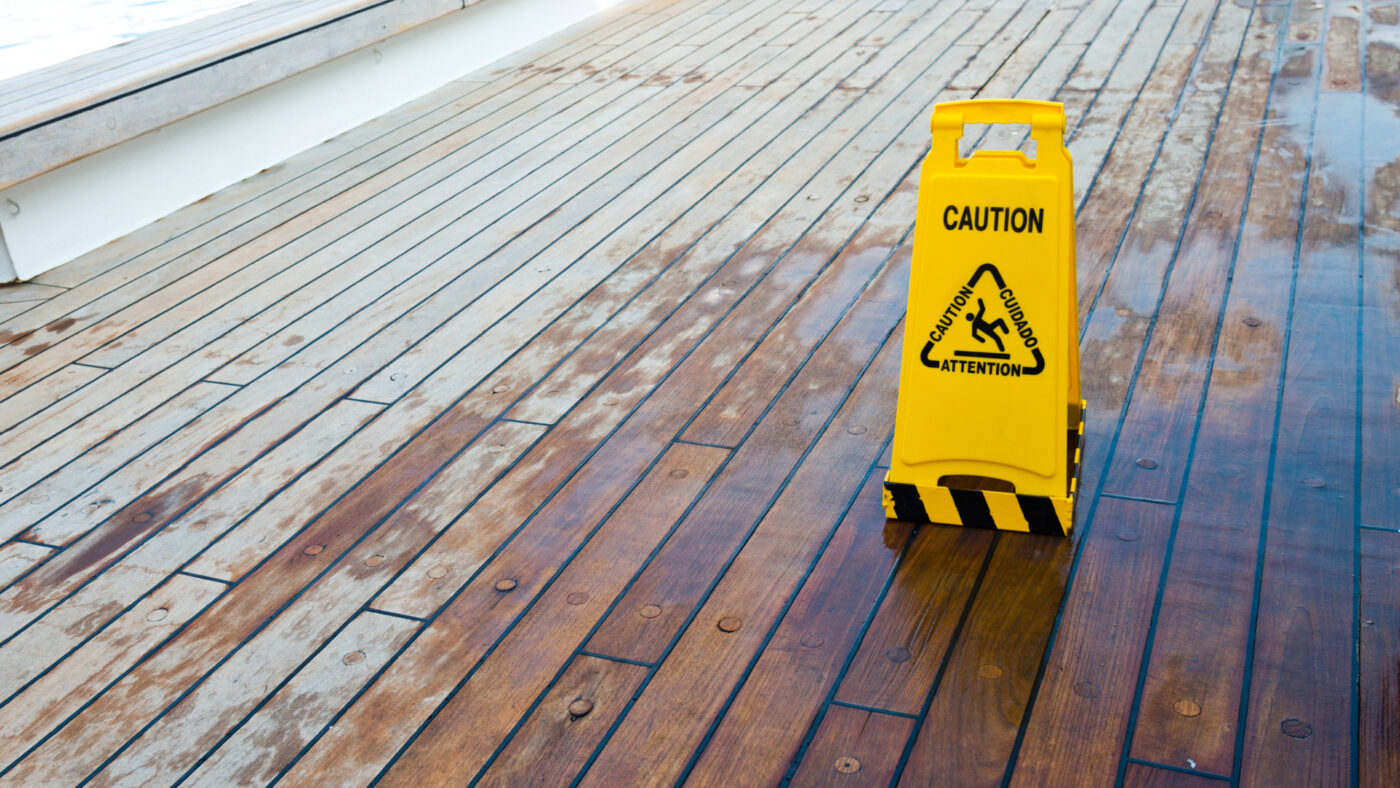
Slippery decking can be a serious hazard, especially in wet or icy conditions. If your decking becomes unsafe after rain or frost, you’ll want a solution that provides reliable grip underfoot. While there are several non-slip options available, not all of them offer the same level of effectiveness or durability.
This guide explores the different ways to improve slip resistance on your decking and explains why DeckWright® Anti-Slip decking boards are the best and most effective long-term solution.
The Most Effective Option: DeckWright® Anti-Slip Decking
For those serious about making their decking safe in all conditions, DeckWright® Anti-Slip decking boards are the best choice. These boards feature resin and aggregate inserts that provide a permanent non-slip surface, built to last in all weather conditions.
Why Choose DeckWright® Anti-Slip?
- A Permanent Solution – Unlike coatings or mats that wear away, DeckWright® Anti-Slip is fully integrated into the decking.
- Effective in Wet and Icy Conditions – The resin-infused inserts ensure excellent grip all year round.
- Low Maintenance – No need for constant cleaning or reapplication of anti-slip products.
- Proven Performance – Exceeds British safety standards for slip resistance.
Rather than relying on temporary fixes, DeckWright® Anti-Slip provides a long-term solution that ensures your decking remains safe without the hassle of ongoing maintenance.
Other Non-Slip Decking Options (and Their Limitations)
While there are alternative ways to improve traction on your decking, they don’t offer the same durability or reliability as DeckWright® Anti-Slip.
Anti-Slip Paint or Coatings
Applying a non-slip paint or coating is one of the easiest DIY solutions, but it’s also one of the least durable. These coatings contain a grit-like texture to improve grip, but they wear away over time, especially in high-traffic areas.
- Requires regular reapplication to maintain effectiveness.
- Can peel or crack in extreme weather conditions.
- Not as visually appealing as a purpose-made anti-slip decking board.
Anti-Slip Strips or Inserts
Some people install GRP (Glass Reinforced Plastic) strips, rubber inserts, or metal treads onto existing decking. These can improve grip in key areas but don’t offer full coverage and can become damaged or loose over time.
- Only provides partial slip resistance, leaving other areas exposed.
- Can look out of place on natural timber decking.
- Needs installation and may require replacement over time.
Outdoor Mats or Rubber Coverings
Non-slip mats or rubber coverings can be placed on high-risk areas such as steps or entrances. While they improve grip temporarily, they aren’t a practical long-term solution.
- Only covers small sections, not the entire decking.
- Can become a trip hazard if not secured properly.
- May trap moisture, leading to timber decay underneath.
Regular Cleaning & Maintenance
Keeping your decking clear of moss, algae, and dirt can help reduce slipperiness, but it won’t solve the problem completely. Even with regular pressure washing and chemical treatments, decking can still become hazardous when wet.
- Doesn’t provide continuous slip resistance in wet conditions.
- Requires frequent maintenance to prevent algae build-up.
- Only a short-term fix, not a long-lasting solution.
Conclusion: The Best Solution for Non-Slip Decking
While other methods can help improve grip, they require regular upkeep and reapplication to remain effective. If you want a safe, low-maintenance, and long-term solution, DeckWright® Anti-Slip decking boards are the best option.
Instead of constantly battling slippery surfaces, choose DeckWright® Anti-Slip for a decking solution that works in all weather conditions, with little ongoing maintenance required.

